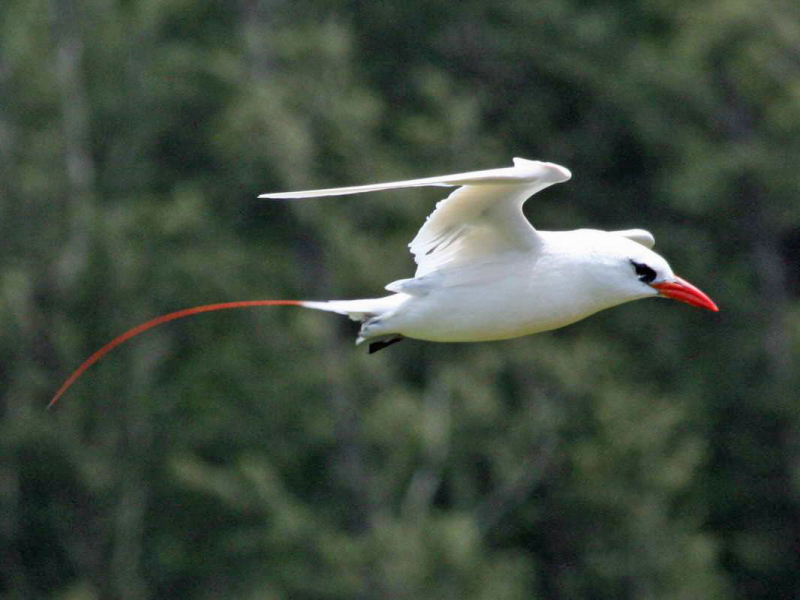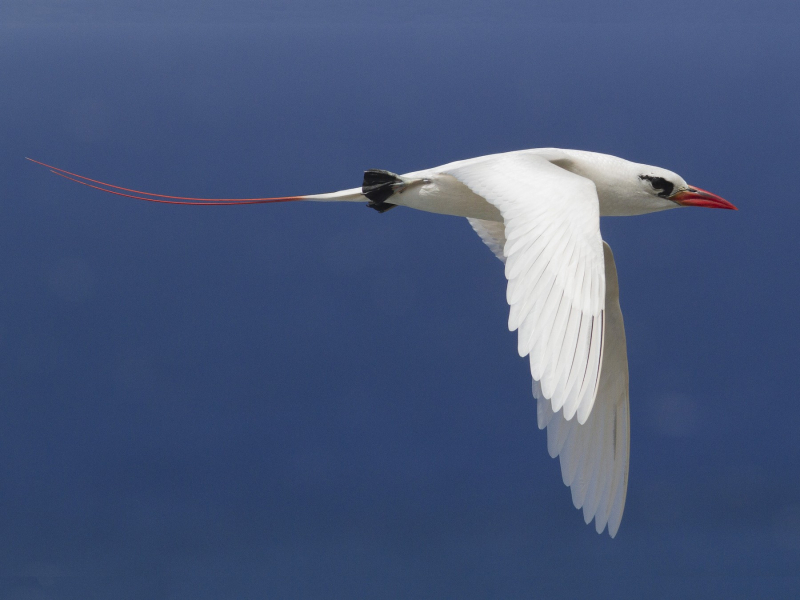Red-Tailed Tropicbird

The Red-Tailed Tropicbird (Phaethon rubricauda) is a seabird native to tropical parts of the Indian and Pacific Oceans. One of three closely related species of tropicbird (Phaethontidae), it was described by Pieter Boddaert in 1783. It has almost all white plumage, a black mask, and a red bill, giving it the appearance of a tern on the surface. The feathers of the sexes are comparable. Adults have red tail streamers that are roughly twice as long as their bodies, as implied by the common name. There are four recognized subspecies, but there is no evidence of subspecies because of evidence of clinal variation in body size, with smaller birds in the north and bigger birds in the south.
The red-tailed tropicbird dives into the ocean to collect its prey, which is mostly flying fish and squid. On oceanic islands, nesting takes occurs in loose colonies; the actual nest is a scrape that can be discovered on a cliff face, in a fissure, or on a sandy beach. One egg is laid, and both sexes spend the next six weeks incubating it. Once the chick has hatched, the parents specialize their foraging: one forages for the chick for a few hours at a time, while the other undertakes far longer journeys to feed themselves. During incubation, the parents make lengthy food-foraging trips lasting about 150 hours.











